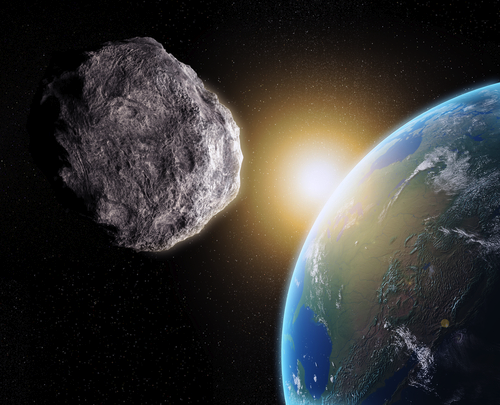So it appears that a group of billionaires are going to announce the first asteroid mining company tomorrow. (You don’t need me to repeat the news here. Visit http://planetaryresources.com and follow their Twitter account @PlanetaryRsrcs.)
Buried deep in this site, you might stumble across a Letter to the Editor that the Washington Post printed on October 12, 1990 under the headline “Go Get an Asteroid”… 22 years ago. None of the ideas were original with me, but it’s one of the first discussions of asteroid mining in the mainstream media. (Seven years before “Mining the Sky” was published!)
Here’s the PDF ![]() .
.
Just for the heck of it, I’m going to reproduce the text here.
Go Get an Asteroid
I am concerned by the tone of Jessica Tuchman Mathews’s op-ed piece last week, “The Mars Extravaganza” {Oct. 5}. I am not going to debate whether sending Americans to the Moon and Mars is wise or affordable under current budget restraints. I am not going to deny that there are numerous challenges facing our environment (pollution, deforestation, extinctions, etc.), as Mrs. Mathews points out. But Mrs. Mathews falls into the environmentalist trap of asking, “Why should we spend all that money on space when there are so many problems here on Earth?”
The right question to ask is, “How can we best spend money to solve these problems here on Earth?” The surprising answer is: in space. Only through space-based observations can we understand what’s happening to this planet. More important, only through space-based industry can we halt and reverse the trends threatening our environment.
Are messy industrial processes threatening groundwater supplies? Move the industries to orbit and send down only the finished goods. Is open-pit mining erasing huge tracts of wilderness? Go get an asteroid, which contains far more nickel, iron and other metals than humanity has mined to date. Are burning fossil fuels polluting the atmosphere and contributing to CO2 buildup? Put solar power stations in orbit and beam down limitless quantities of safe, clean, unpolluting energy. Are Third World children dying from disease for lack of medicine? Build a pharmaceutical factory in the microgravity of orbit, where we can make life-saving drugs for a tiny fraction of the cost of Earth-based processes.
These activities, and hundreds more, do not require a trip to Mars, but they cannot be carried out by machines. Only the intelligence and flexibility of men and women in orbit can break the grip of Earth’s gravity and bring the bounty of space to all mankind.
America knows how to carry out these activities quickly, safely and economically. So do Japan, the Soviet Union and the Europeans. But we are hobbled by NASA, a bureaucracy beholden to its unreliable and obsolete Shuttle, its bloated Space Station Freedom and a host of other constituencies. If private industry were encouraged to begin the commercial and profitable use of space without the 1,001 regulations enforced by our government, then we could see astonishing gains in space technology — and in the benefits of space for the first, second and third worlds — by the end of the decade.
A vigorous and independent space program could be the best friend of the entire environmental movement. I encourage Mrs. Mathews to explore its potential benefits for the problems she deplores; she shouldn’t throw out this baby industry with NASA’s dirty bath water.
Stephen Fleming, Sterling, Virginia
With 22 years of hindsight, it’s kind of amusing that the Soviet Union has ceased to exist, and I was worried about the Japanese and not the Chinese. And the claims for the orbital pharmaceutical factory are still unproven. But I think the rest of it was right on target.
For of all sad words of tongue or pen,
the saddest are these: “It might have been!”
–John Greenleaf Whittier, 1856

In response to a query, I wrote a bit more on this topic, which you can read here:
http://amplifier.gatech.edu/articles/2012/04/asteroid-mining-its-about-time
And you can see me being interviewed (briefly!) on CNN at http: //www.cnn.com/video/#/video/tech/2012/04/29/wolf-mining-asteroids.cnn
Check out the introduction to my 1991 article, Mining Law for Outer Space (then read the whole article):
Introduction
In 1983 one author estimated that the precious and strategic metals in a single asteroid could have a market value of five billion dollars. Unfortunately that estimate focused on the metals’ intrinsic value, and was based upon assumptions regarding other factors which are difficult to predict, including the costs of exploration, surveying, excavation and transportation. But the estimate was nonetheless worthwhile, because it illustrated the potential value of extraterrestrial resources. While investors could become rich by mining asteroids for precious and strategic metals and then selling the materials in terrestrial markets, the more likely use for asteroidal resources is in extraterrestrial construction and manufacturing operations.
Scientists believe that some earthapproaching asteroids contain abundant amounts of hydrogen, nitrogen, and free metals, all of which may be scarce on the Moon. On the other hand, the Moon contains significant amounts of oxygen, silicon, iron, aluminum and titanium. All of these materials will be valuable for extraterrestrial activities because launching raw materials from earth is too expensive.
Most aerospace scientists are familiar with the preceding discussion and techniques for processing and using extraterrestrial materials continue to be developed and discussed in the technical literature. Lawyers, however, have paid little attention to the issue of extraterrestrial mining. Legal issues warrant further discussion, because entities will never begin mining projects if their investments are not protected.
This article examines the existing treaty law which governs resource appropriation, and other treaty, statutory and case laws which provide precedents for extraterrestrial mining. The article concludes by describing the broad outlines of a mining law which would both protect and encourage investment.